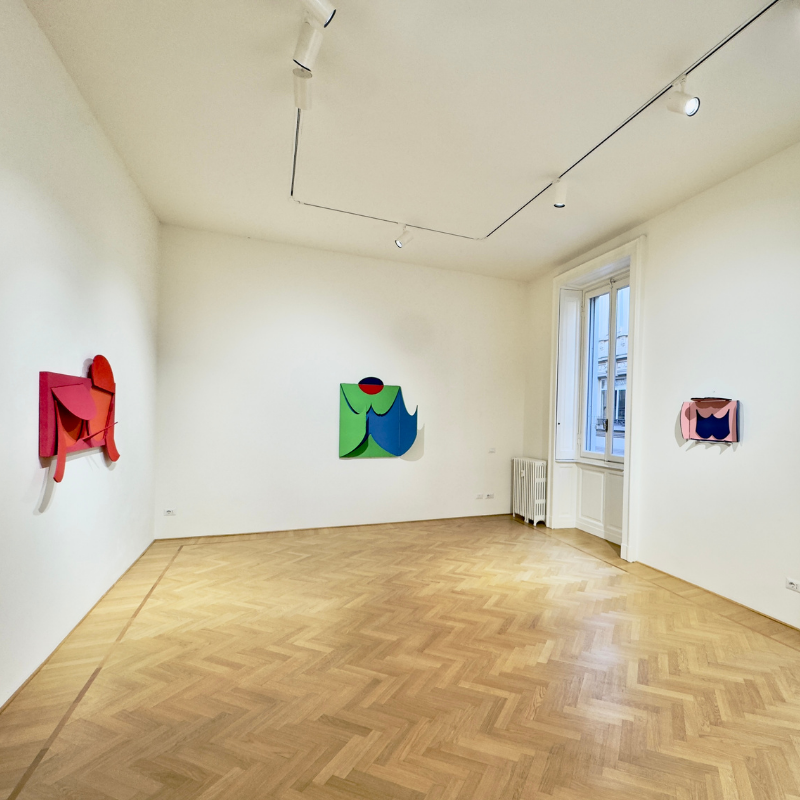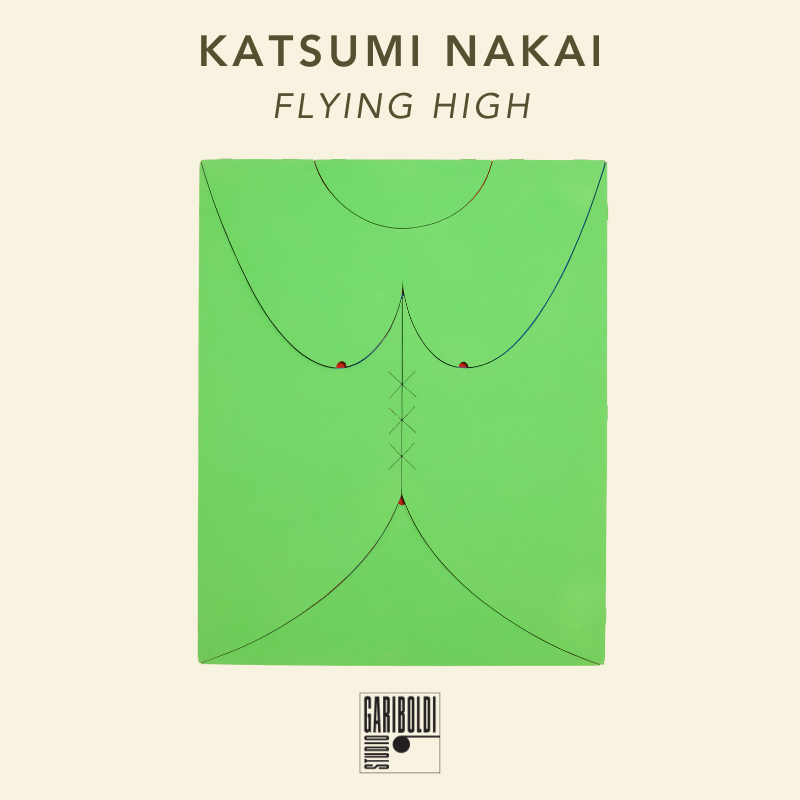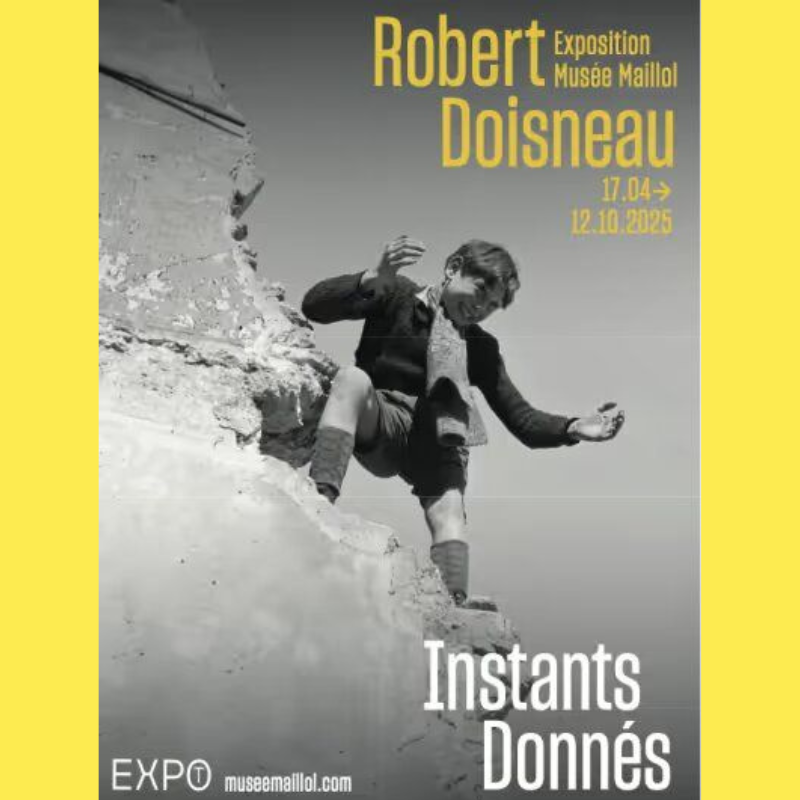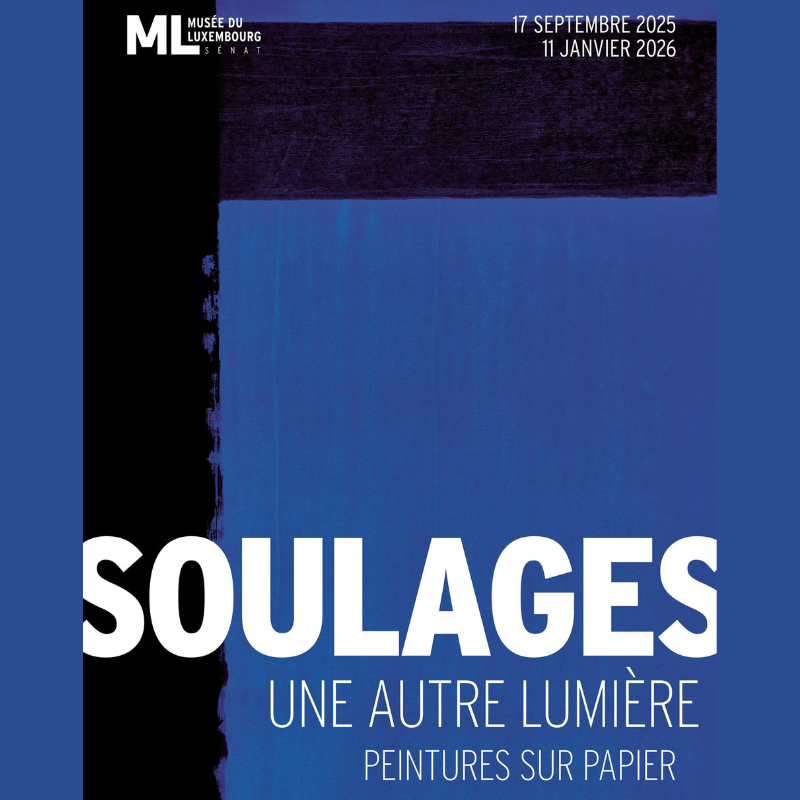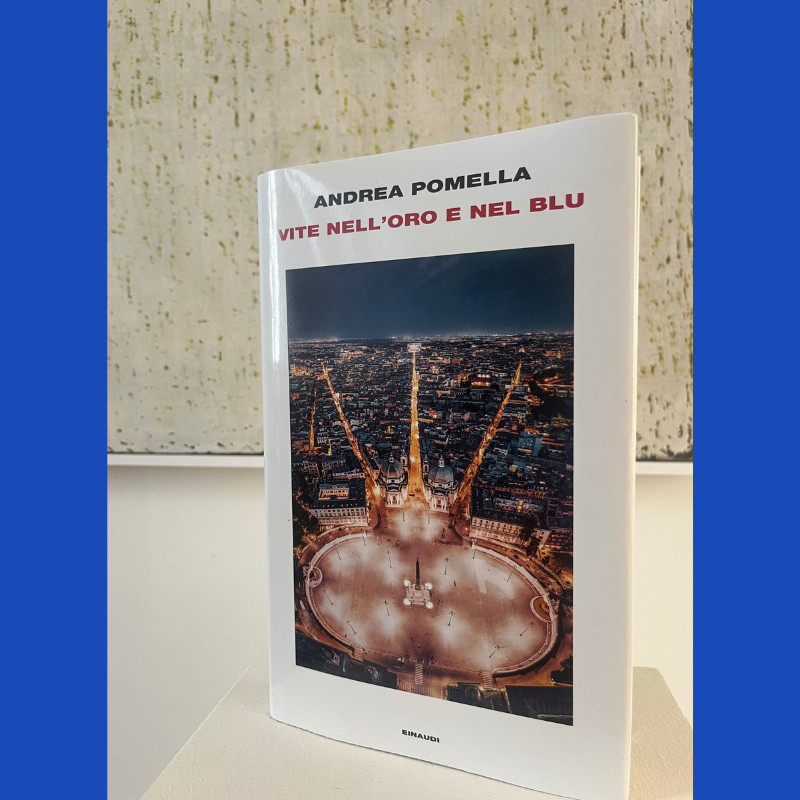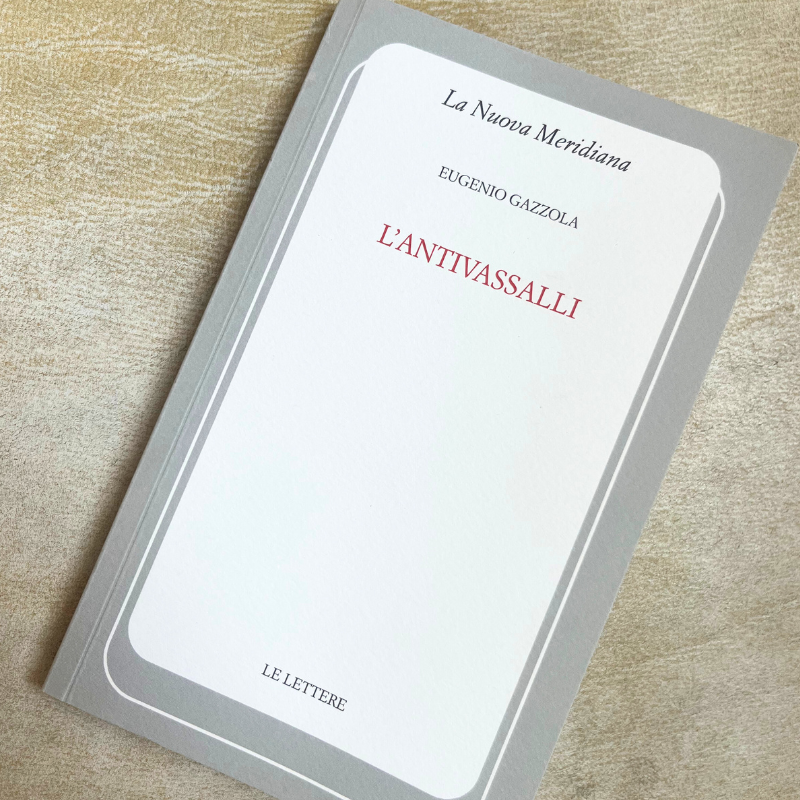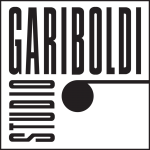NEWS
Mostre
Katsumi Nakai. A Dialogue Between Japan and Italy
28.10.2025
On October 16, we opened the exhibition Katsumi Nakai. Flying High — the second solo show dedicated to the Japanese artist, featuring works from the 1960s and 1970s. The exhibition is part of a broader artistic and cultural project that has defined the gallery since its foundation.
Studio Gariboldi’s research began with postwar Italian and international informal painting and continues to explore the connections between artists who lived and worked in Milan during the 1950s, 1960s, and 1970s.
In recent years, the focus has turned to the relationship between Italy and Japan: artists such as Katsumi Nakai, Yayoi Kusama, Tomonori Toyofuku, Aiko Miyawaki, Nobuya Abe, Key Hiraga, and others have been presented in our gallery, narrating the artistic story of that era — one deeply rooted in the courtyard of Corso Monforte 23, where Lucio Fontana had his studio and lasting friendships were born.
Flying High also includes a photographic section displaying images of iconic Milanese interiors and exhibition views personally curated by Nakai in the 1970s.
The exhibition is open Monday to Friday, until January 30.
from 11 a.m. to 1 p.m., and 2 p.m. to 6 p.m.
Exhibitions
Katsumi Nakai. Flying high
21.10.2025
Katsumi Nakai. Flying High
16 October 2025 – 30 January 2026
After his early abstract-informal explorations with the Tekkeikai group in Osaka, Katsumi Nakai found in Milan, from 1964 onward, a stimulating environment that led to a transformation of his artistic production. While his debut in Venice was still painterly, at his 1967 solo exhibition at the Galleria del Naviglio in Milan he presented his new “painting-objects”: shaped and painted wooden works that unfold to take on ever-changing forms.
These are works that invite reflection on the poetry of blossoming — of opening (hiraku) — and of constant transformation. Through a coherent and evolving research, enriched by multiple influences, Nakai created works that make the imagination “fly high,” recalling the lightness and endless variety of Japanese kites (tako). These notes focus on those very aspects of Nakai’s practice, documented also by contemporary reflections.
Corso Monforte 23, Milan, 20122
Exhibitions
Robert Doisneau
07.10.2025
“The exhibition Robert Doisneau. Instants marks the return of Robert Doisneau’s photographs to Paris after years of absence.
Some 350 photographs have been carefully selected from the 450,000 in the collection. The iconic images stand side by side with completely renewed series, demonstrating the photographer’s dexterity in exploring human beings in a wide range of environments: childhood, artists, writers, bistros, the Vogue years, but also the harshness and gravity of life (…)”
Exhibitions
Pierre Soulages
25.09.2025
Pierre Soulages
Musée du Luxembourg, Paris
October 17, 2025 – January 11, 2026
“Thanks to exceptional loans from the Musée Soulages, the exhibition brings together 130 works produced between the 1940s and the early 2000s, including 25 never shown before.You’ll discover a group of paintings on paper, long kept in the artist’s studio, which testify to the constancy and freedom with which Soulages approached this medium.
After favouring walnut stain in the early years, Pierre Soulages often returned to the material used by cabinet-makers, whose qualities of transparency and opacity, and luminosity in contrast with the white of the paper, he loved. He would also use ink and gouache for works whose generally small formats yielded nothing to their formal power and diversity.”
Musèe Du Luxembourg, Paris.
Bookflow
Self-Portrait
02.09.2025
Carla Lonzi is a writer, poet, and art critic who contributed to dismantling the power dynamics between critic and artist. Her way of reflecting on art criticism finds its full expression in the volume Autoritratto (1969), where Lonzi engages with fourteen artists active in the 1960s: Carla Accardi, Getulio Alviani, Enrico Castellani, Pietro Consagra, Luciano Fabro, Lucio Fontana, Jannis Kounellis, Mario Nigro, Giulio Paolini, Pino Pascali, Mimmo Rotella, Salvatore Scarpitta, Giulio Turcato, and Cy Twombly.
The book stems from the collection and editing of conversations between her and the artists, recorded and freely rearranged by the author herself, so as to reproduce “a kind of convivium.” For Lonzi, the result is “real,” even though the conversations did not take place in a single time and place. In Autoritratto, Lonzi’s voice blends with that of the artists; the dialogue is equal, never judgmental or dominating. “Today one can be close to artists also by listening to them and then listening again (…). But how can you, after making such a gesture (…), go back to the old gesture .”
The volume is edited by Annarosa Buttarelli, philosopher and curator of the Carla Lonzi Archive at the Galleria Nazionale d’Arte Moderna e Contemporanea in Rome.
This book matters because Carla Lonzi, with Autoritratto, was revolutionary not only for art criticism but also for the practice of listening. Moreover, the volume contains reflections and revelations from some of the most important Italian artists of the 1960s, which every reader and collector will find a pleasure to discover.
Carla Lonzi, Autoritratto, La Tartaruga, 2024
Bookflow
E non scappare mai
14.07.2025
Who was Miriam Mafai, really?
Journalist, writer, Italian politician — but also a wife, mother, and daughter of two artists: the painter Mario Mafai and the sculptor Antonietta Raphaël.
In the book E non scappare mai (And Never Run Away), columnist and correspondent Annalisa Cuzzocrea (from Repubblica) offers us a perspective on the woman and the professional, drawing from unpublished letters and notebooks.
It interests us because the narrative also includes her parents, grappling with the challenges of gaining recognition in the art market of the 1950s and 1960s in Italy and France.
Annalisa Cuzzocrea, E non scappare mai, Rizzoli
Bookflow
Vite nell’oro e nel blu
08.07.2025
What’s happening in 1950s Rome while in America Andy Warhol, Robert Rauschenberg, and Jasper Johns are experiencing their dazzling season?
Four eccentric lives are circulating—Mario Schifano, Tano Festa, Franco Angeli, and Francesco Lo Savio.
The novel Vite nell’oro e nel blu (“Lives in Gold and Blue”) is written by Andrea Pomella, and it captures our attention because the author brings to life a world dear to art lovers and collectors, made of stories rather than market evaluations.
Andrea Pomella, Vite nell’oro e nel blu, Einaudi, 2025
Bookflow
THE ANTI-VASSALLI
25.06.2025
Eugenio Gazzola, essayist and cultural organizer, signs a book on Sebastiano Vassalli—renowned writer, but also poet and painter. Vassalli is best known for his novel La chimera (winner of the Strega Prize, 1990), but many are unaware of his pop paintings from the early 1960s, which Studio Gariboldi has patiently and passionately collected. With equal passion and expertise, Eugenio Gazzola has written L’ANTIVASSALLI, an essay of nearly 200 pages that reveals much to those who admire the poet, the writer, and also (especially in chapter 6) the artist. Gazzola will be at the gallery in December to present his book: Thursday the 11th at 5 PM. Limited seating, reservation required at press@studiogariboldi.com
Eugenio Gazzola, L’ANTIVASSALLI, Le Lettere, Florence 2025


